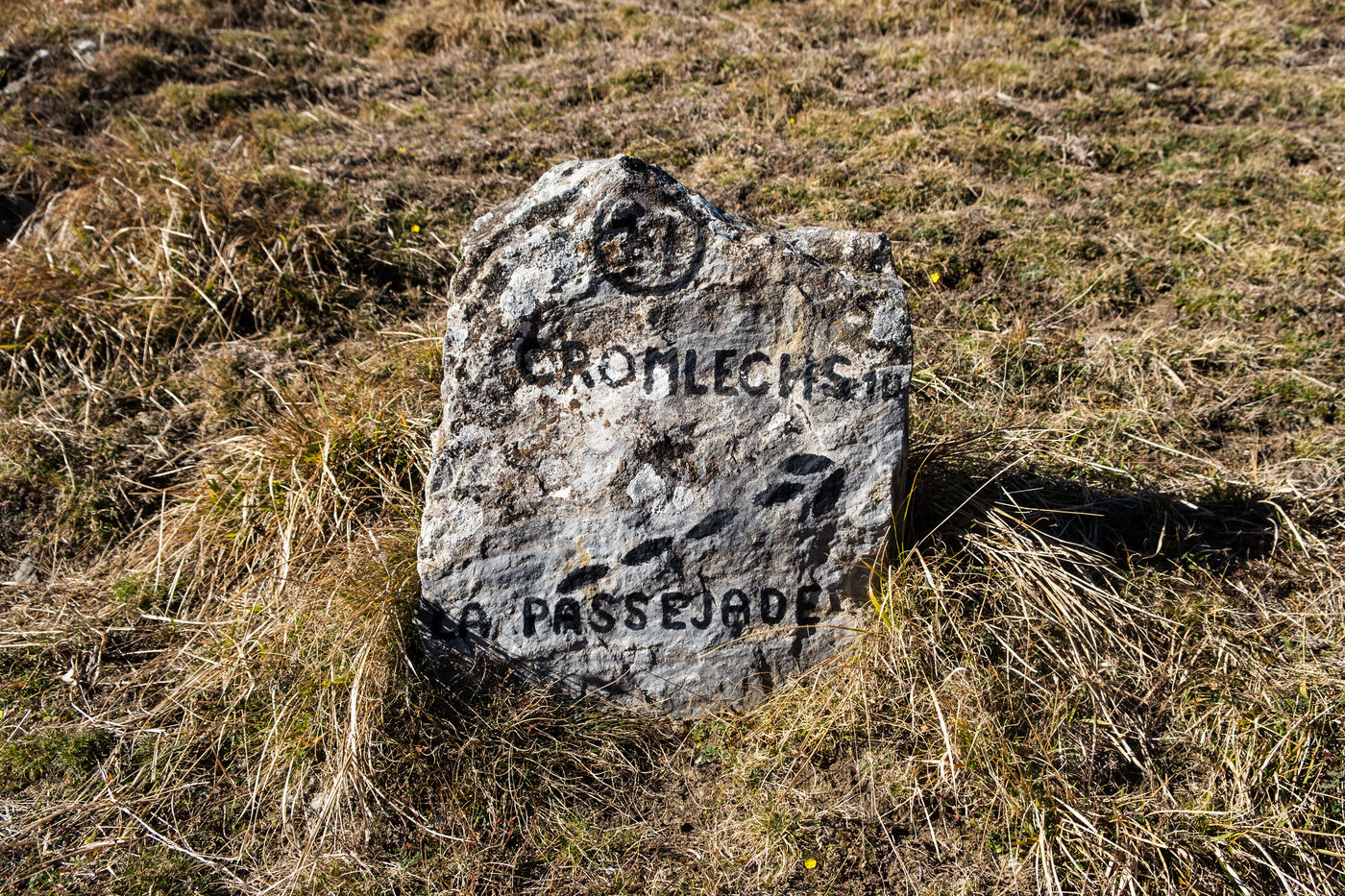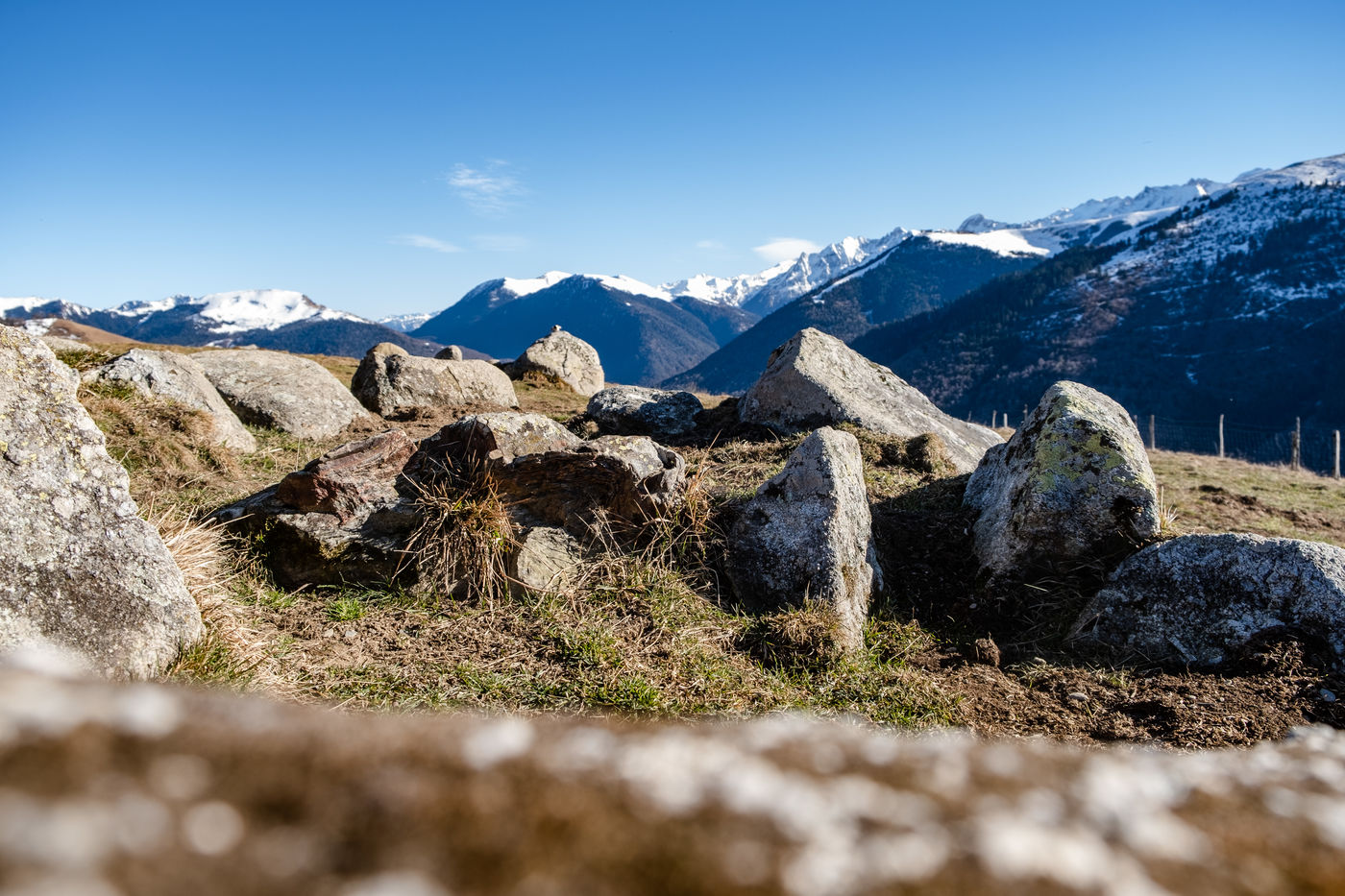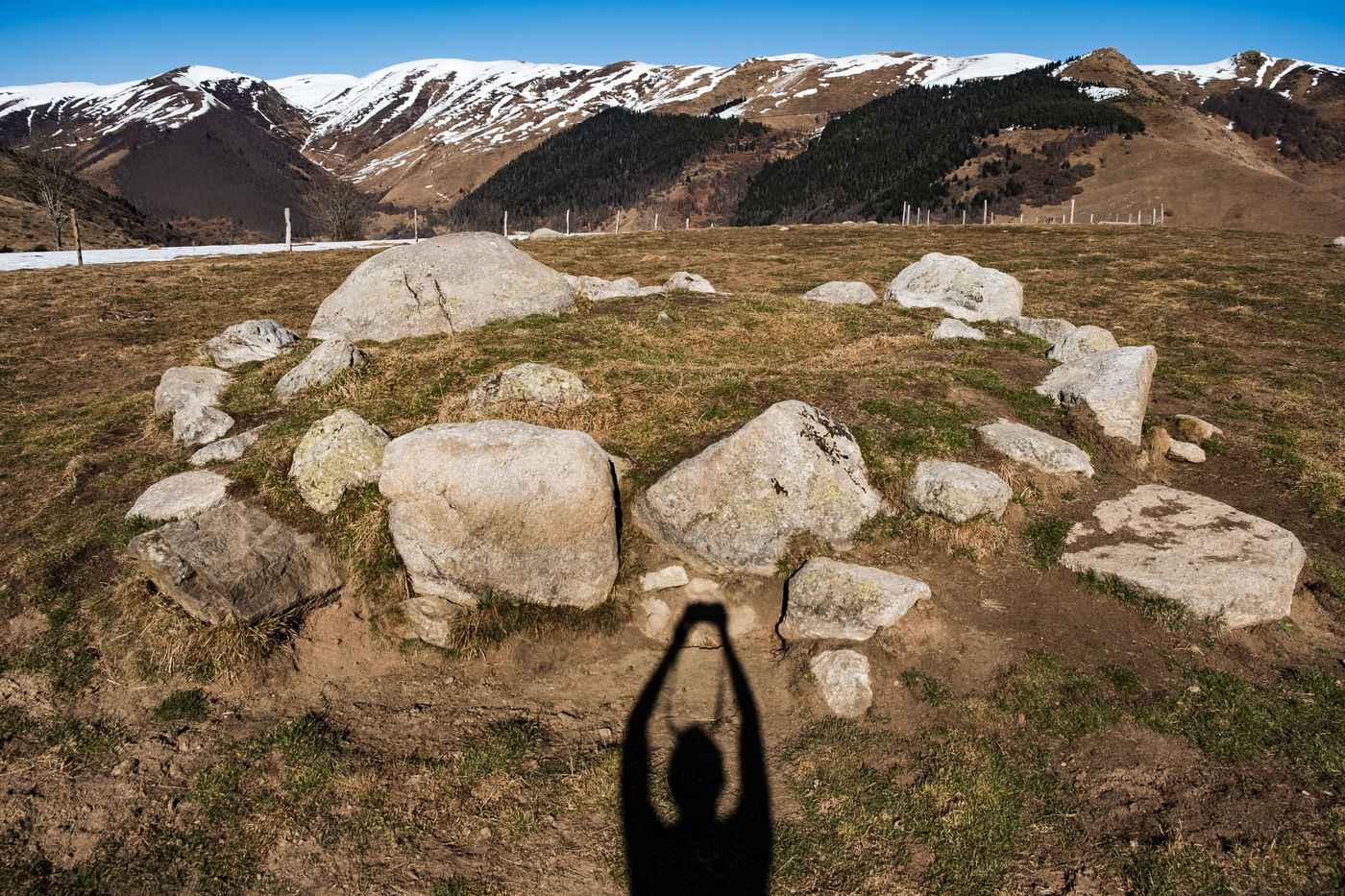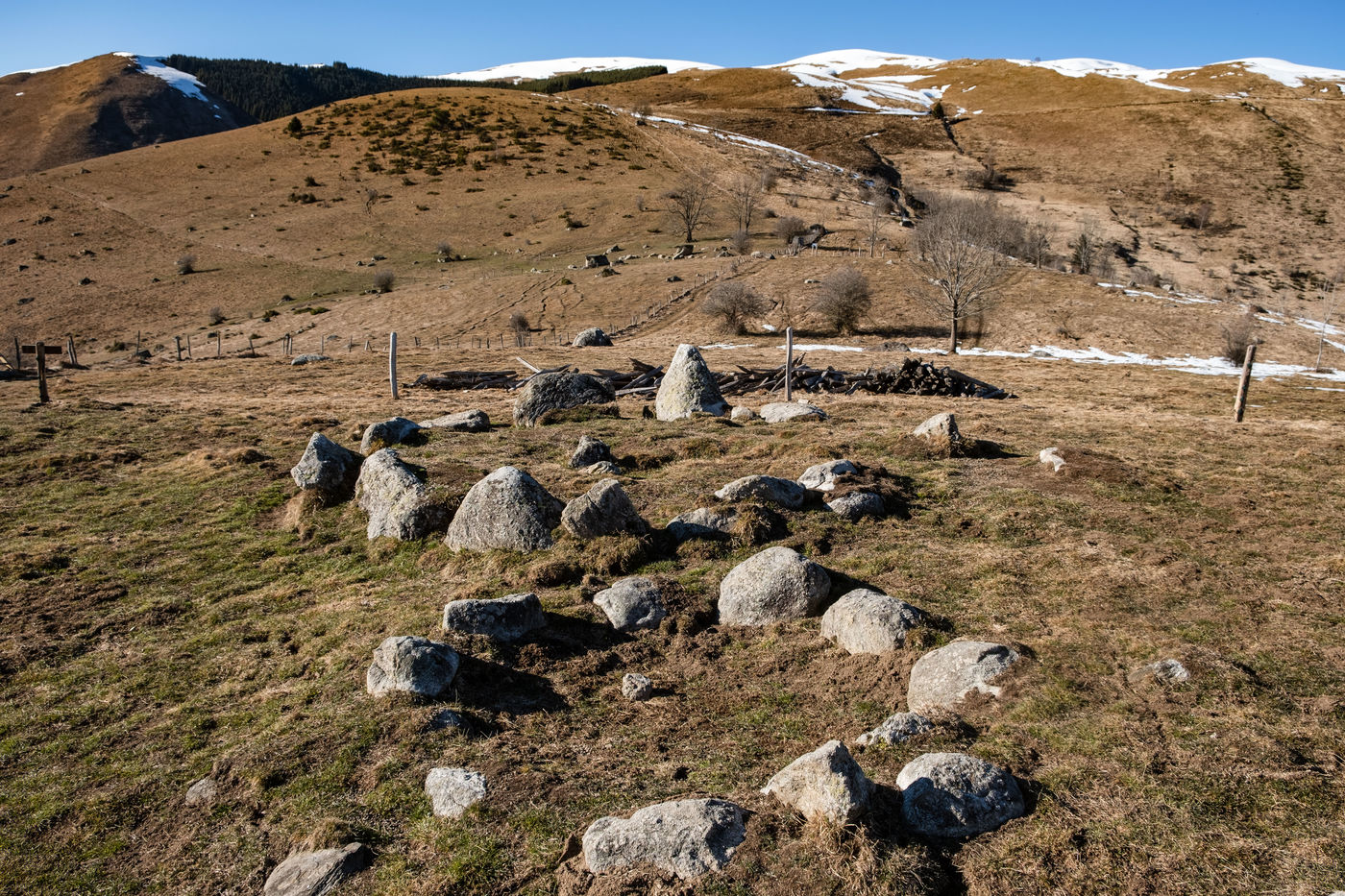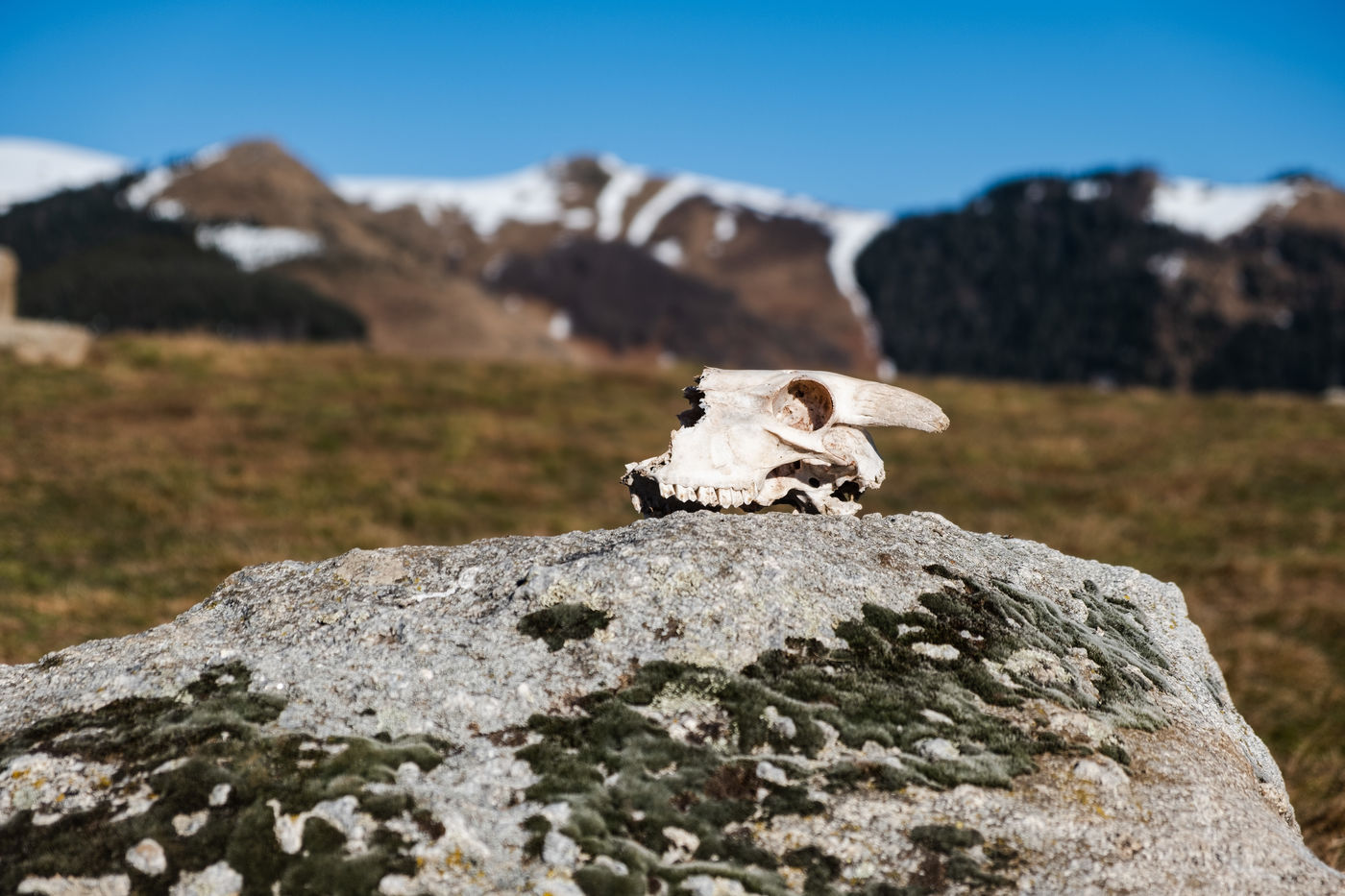Pour accéder à la série en entier, vous devez vous logger ou demander un compte Hans Lucas en cliquant ici.
Cromlechs dans les Pyrénées
Les cromlechs sont un ensemble de pierres mégalithiques alignées circulairement et de structures variées qui vont du cromlech proprement dit : "pierres enfoncées dans le sol formant un cercle" jusqu'au tumulus défini comme "groupe de pierres circulaires". C'est le cas pour les cromlechs de la montagne d'Espiau au dessus du village de Saint-Aventin.
Les spécialistes ont attribué à ces monuments une fonction exclusivement funéraire. Ils représentent souvent des étoiles de la voie lactée, telle a été la conclusion des spécialistes après l'étude complète de tous les cromlechs recensés dans les Pyrénées ; ils seraient en quelque sorte un calque du firmament adapté au terrain local, mais rien n'est encore démontré avec certitude à ce sujet.
On trouve sur la montagne d'Espiau ces monuments mégalithiques constitués de pierres disposées en cercle. D'origine préhistorique ils auraient été des lieux de rassemblement de culte ou d'observation des astres. Ces alignements circulaires de quelques mètres de diamètre sont matérialisés par des pierres fichées dans le sol, ils peuvent être isolés, dispersés ou alignés.
Au centre de chacun d'eux, une ciste (sorte de cavité en pierre plates) recueillait les cendres des défunts dans des pots de terre cuite, ce qui a permis la datation de ces tombes entre 2000 à 3000 ans avant notre ère.
Cromlechs in the Pyrenees
The cromlechs are a group of megalithic stones aligned in a circle and of various structures, ranging from the cromlech itself: "stones set in the ground forming a circle" to the tumulus defined as "group of circular stones". This is the case for the cromlechs on the Espiau mountain above the village of Saint-Aventin.
Specialists have attributed to these monuments an exclusively funerary function. They often represent stars of the Milky Way, such was the conclusion of specialists after a complete study of all the cromlechs recorded in the Pyrenees; they would be in some way a copy of the firmament adapted to the local terrain, but nothing has yet been proven with certainty on this subject.
These megalithic monuments, made up of stones arranged in a circle, can be found on the mountain of Espiau. Of prehistoric origin, they would have been places of gathering for worship or for observing the stars. These circular alignments of a few meters in diameter are materialized by stones stuck in the ground, they can be isolated, scattered or aligned.
In the centre of each of them, a cist (a kind of flat stone cavity) collected the ashes of the deceased in terracotta pots, which has allowed the dating of these tombs between 2000 and 3000 years BC.
